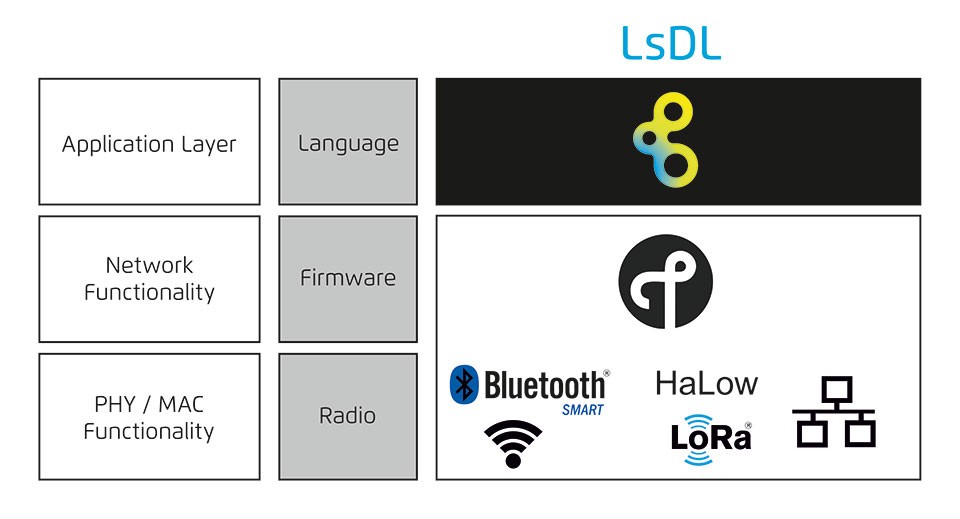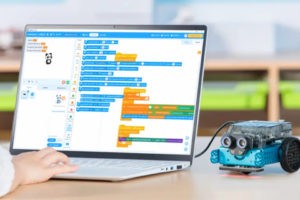Connecting the Islands in the Internet of Things

The Internet of Things (IoT), the automated communication between devices and machines is changing our lives in a fundamental way. You all know the buzzwords when it comes to IoT: Smart Cities, Smart Home, Smart whatwhat. Connected devices tell us on a fingertip about current traffic situations, they let us remote control our homes. They make us more productive, let us optimise production and supply chains. They support farmers during all seasons gaining better results for crop and livestock. Short: The Internet of Things has the potential to do us lots of good… if we use it the right way.
While speaking about the Internet of Things in the current days, we actually talk more about “Islands of Things”. Gazillions of products and solutions, and they all work well – in their own ecosystem. But to make use of the data between one system to another you need translators, gateways and/or the cloud. Often you’re stuck with one vendor, making extensions in your setup expensive, complex and unflexible. Lots of unneccesary data is transferred from each device to the gateways to the cloud and back. That is time consuming and ineffective. And what if that one vendor of yours goes out of business? When the cloud is down, many devices simply stop working.
One Language and why we shouldn’t use the “Star Wars” approach
Wouldn’t it be better we invented a language that all devices could understand? A language that enables them to interact directly with each other, making decisions on their own without having to consult a gateway or the cloud in the first place? Imagine, you could even pull the plug on the Internet and the devices wouldn’t care.
Remember Star Wars “The Phantom Menace”? There is that scene where the evil Trade Federation sends out that huge army of battle droids to attack the Gungans on the green plains of the planet Naboo. An army almost impossible to defeat. Well, until someone decides to shoot down the control ship circeling Naboos orbit. Since the battle droids receive all their commands from that main station, they fell useless on the ground, once the mothership got destroyed.
That example describes very well the weaknesses of many solutions actually working in the Internet of Things.
Ok, probably we won’t have to fight an “evil Trade Federation” in the near future, but what about natural disasters? Imagine a Smart City getting struck by a storm. If all devices in that smart city depend on working datacenters, lets hope they have enough Diesel and are safe enough from floods, earthquakes, etc. Wont happen? Well, it did before. Hurricane Sandy struck New York in 2012 and took out several data centers causing power outages and flooding.
Direct communication is safer and more flexible
Lemonbeat takes a different approach: Connecting all the Islands in the Internet of Things and create a real “Internet of Everything”. To make that possible, a universal language needs to be implemented that all devices that are able to communicate via Internet can understand. The heart of Lemonbeat is the Lemonbeat smart Device Language or short “LsDL”. An XML-based Markup Language that reduces all devices to simple values On, Off, Temperature, Speed, Position, Full, Empty, etc. With LsDL we enable devices to communicate directly with each other and make decisions directly rather than following “orders” from a central unit somewhere. The devices follow a set of rules depending on the values they receive from other devices. These rules can be updated during runtime making it easy to add more devices at anytime and extend the functionality of the whole setup.
LsDL is compatible with every Internet Protocol (IP)-based communication method. In other words: As the so called “Application Layer” it is located on top of the “Open Systems Interconnection”-Model (OSI*), a stack of Layers defining how to transmit Data from A to B.
Speed up implementation: The Lemonbeat Stack
Generally, LsDL can be implemented into any individual IP-Stack imaginable. But to speed up implementation time and reduce costs for vendors, Lemonbeat offers its own stack. The Lemonbeat Stack containts a lot of important functions for flexible, reliable and energy-saving communication between devices such as full IPv6 Implementation, NTP time support, AES encryption and a patented 868 Mhz radio frequency transmission with 32-channel hopping for increased robustness combined with a wake-on-radio method to support long lasting battery life.
Use cases
Lemonbeat technology is suitable in various fields of IoT. One example where proof of concepts already demonstrated good results is the field of buildingautomation. Sensors measuring sun intensity, temperature, wind and other atmospheric conditions, are able to communicate directly with the shades and blinds of the building without needing to be linked via a central control unit. Conventional sensors are used to measure the current light and atmospheric conditions. The sensors pass their data to a Lemonbeat module, which in turn sends everything on to the blind controls which have been kitted out with Lemonbeat technology. If further functionality is required in the future, for example additional sensors or new features for the switch e.g. long-press activates a separate function, this can be implemented through LsDL at any time. Combined with a connection to the buidlings heating- oder cooling systems or even the office calendar for meetings, the overall climate control of the building can be fully automated to an efficiency level impossible to gain on a manual level.










